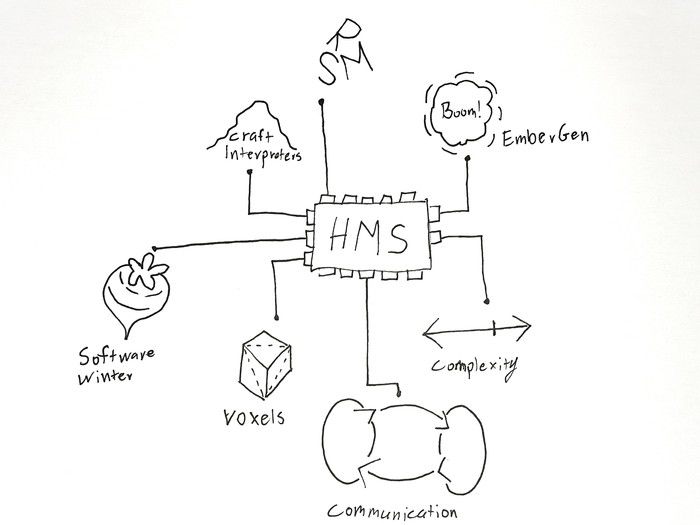Handmade Seattle - notes
Handmade Seattle had an exceptionally high number of exceptional talks especially given the it is a small conference with only one track. I collected a few notes on some of my favorites, though I invite you to watch all of the talks.
Weathering Software Winter - Devine always has inspiring and visually stunning talks. Seeing more of the inspiration behind the Uxn virtual machine inspires me to also pull inspiration from history. His ideas around e-waste, preservation and doing more with less are under appreciated areas to focus in an industry that wants to reinvent everything all the time.
Compexity: Why Can’t We Make Simple Software - Peter Van Hardenberg did an excellent job explaining software complexity and the ways that it manifests without blame! It is a very easy trap to fall in as an engineer to think that complexity is a problem created by other engineers – or your past self, but instead Peter frames it as a necessary part of the system which must be tolerated and managed.
He mentions how better tools can’t save us from complexity, but only allows us to tolerate more complexity before it feels painful. I wish he had said how amazing that is. Tools making software that was previously painful to express simpler is an amazing feat!
I think he also did a good job reminding people that removing complexity by starting over can be a way to avoid complexity, but only temporarily. Complexity is a feature of a system that is valuable!
EmberGen - At least watch this talk for the explosions! I also think that this is one of the best interviews at the conference. The speaker did an amazing job explaining EmberGen and how to approach technical problems with a focused and methodical approach that seems worth emulating.
RSM, a little virtual computer - I am a sucker for virtual machines. RSM has some interesting properties especially around scheduling and memory management. These properties probably make RMS appropriate for more complicated problems at the cost of also being more complicated itself – though still simple compared to other virtual machines.
Compared with Uxn, it is nice that it has a concept of registers and coroutine style multi-threading. I wouldn’t want these things in Uxn, but it is great that there is a similar project with these properties to play with.
